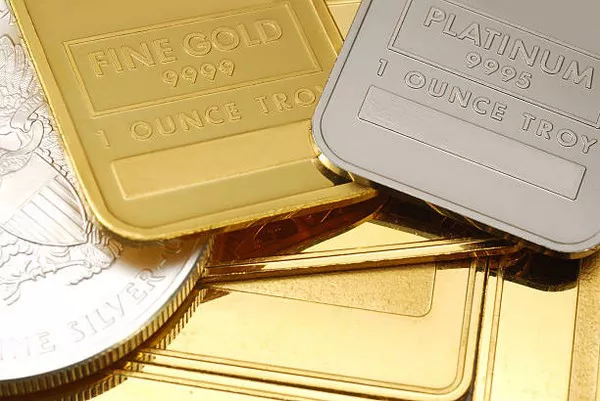The increasing value of gold and silver is poised to continue due to new demand growth and limited new supply, according to Erik Norland, Executive Director and Senior Economist at CME Group.
Gold and silver have a long history of value, with the first coins minted 2,600 years ago in the Anatolian Kingdom of Lydia. This event marked the earliest known gold-silver ratio.
“Like any cross rate, the amount of silver that can be purchased with an ounce of gold is driven by both demand and supply factors, and the ratio is anything but stable,” Norland noted. “Although we don’t have data from ancient times, we have records since gold futures were launched on December 31, 1974. Since then, the gold-silver ratio has fluctuated from 17 to 123 ounces of silver per ounce of gold.”
Norland identified four key factors influencing the gold-silver ratio: relative volatility and the silver beta, fabrication demand and technological change, gold’s role as a monetary asset, and supply-side dynamics.
“Silver is essentially a high-beta version of gold,” Norland explained. “The prices of both metals generally move in strong correlation, with a one-year rolling correlation around +0.8 since 2004.”
Silver’s higher volatility compared to gold means that when gold prices rise, silver prices tend to increase more significantly, reducing the gold-silver ratio. Conversely, in bear markets, the ratio increases. For instance, after peaking in September 2011, the ratio climbed to as high as 124 during the subsequent bear market.
Early in the 2020 pandemic, the ratio dropped by nearly 50% to 64. In 2024, silver has outperformed gold, rising 23% in the first five months compared to gold’s 12%.
Technological advances and fabrication demand also significantly impact the gold-silver ratio. Despite both metals rallying in 2024, gold reached nearly $2,500 per ounce, while silver remains 40% below its 1980 and 2011 peaks.
“While gold and silver have traditionally been used in jewelry, silver has faced significant technological shifts,” Norland said. “The digital revolution and the energy transition have reshaped silver demand.”
In 1999, photography consumed 36.6% of the annual silver supply. By 2023, this dropped to 2.3% due to digital photography’s rise. However, silver’s use in electronics and batteries increased, partially offsetting the decline in photography.
“Silver’s role in the energy transition, particularly in solar panels, which accounted for 20% of 2023 demand, has helped it recover relative to gold since 2020,” Norland added.
Gold, in contrast, remains largely unaffected by technological changes, with jewelry demand dominating. Electronics, dental, and other uses constitute just 17% of annual gold supply, highlighting gold’s status as the “purer” precious metal.
Another critical difference is how central banks treat the two metals. Central banks hold 36,700 metric tons of gold, equivalent to 1.2 billion troy ounces or 13 years of global mining output, and have been net buyers since 2009.
“Central banks’ gold accumulation reflects a desire for a hard asset to complement their reserves of fiat currencies,” Norland observed. “This impacts gold prices directly but boosts silver prices only indirectly.”
Supply-side dynamics further influence the metals’ values. Central bank buying reduces the amount of gold available to the public, which has contributed to the gold-silver ratio’s significant rise from 2011 to 2020.
“New gold supply has stagnated since 2003, and silver supply peaked in 2016,” Norland said. “This slow supply growth is bullish for both metals.”
CME Group’s analysis shows that gold and silver prices are negatively correlated with changes in each other’s mining supply. A 1% decrease in gold supply increases gold prices by 1.9% and silver by 3.0%, while a 1% decrease in silver supply boosts both metals’ prices by 1.3%-1.6%.
Secondary supply, driven by recycling, does not appear to depress prices as it doesn’t introduce new metal into the market.
“Despite differences in supply, demand, and use, gold and silver are interconnected through jewelry demand,” Norland concluded. “As gold is 70 times costlier than silver, rising gold prices reduce gold jewelry demand, while silver’s demand remains relatively stable due to its lower cost. The two metals can be seen as a binary star system, with gold being the larger, more stable star, yet influenced by silver’s pull.”
In early trading on Tuesday, the gold-silver ratio hit a high of 79.873, later pulling back to 79.012, a 0.57% daily gain.


